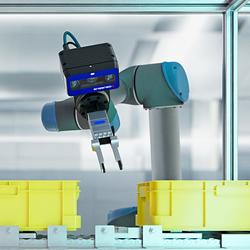The main drivers included improving productivity and efficiency, improving repeatability and consistency of processes, increasing operations capacity, increasing operational agility and flexibility, reducing labor costs, and increasing speed of operations.
Implementing Robots in Healthcare
Mutaz Shegewi | IDC Health Insights
What are main drivers for robot deployment among healthcare providers today?
According to IDC (2017 – see references below) the main drivers for robot deployment among healthcare providers surveyed were identified at hospitals with 200+ beds. These organizations were driven to deploy robots in 2017 as the top organizational priority area for technology investments, ahead of cloud and mobility. The main drivers included improving productivity and efficiency, improving repeatability and consistency of processes, increasing operations capacity, increasing operational agility and flexibility, reducing labor costs, and increasing speed of operations.
What are the typical use cases for robots among healthcare providers today?
Most use cases for robots today according to IDC (2017) were identified at hospitals with 200+ beds where robots could accurately handle time-consuming tasks, reduce labor, and prevent errors. These were primarily in stocking functions (e.g. packing medications, delivery of goods, and packing sterile supplies) and increasingly seen in surgery, home care assistance, and disinfection.
What are the primary reasons for implementing robots in healthcare … safety, economics. ?
The primary reasons for implementing robots in healthcare appeared to be a result of an increasing perception, appreciation, and realization of robots as able to deliver value in healthcare operations. This was mostly through automating manual and laborious tasks, but also increasingly through the adoption of robots for clinical applications and emergent use cases.
What do you expect in future use cases to look like?
According to IDC (2017) emergent and future use cases for robots in hospitals with 200+ beds were identified as mostly as developments and adoption for automated packing functions, but also as an emergent increase for application in surgery and disinfection, patient lifting, greeting patients, and remote monitoring.
What influences a robot investment decision?
According to IDC (2017) the decision to invest in a robot was greatly influenced by vendor attributes. The top attributes were identified as cost, quality and reliability, as well as vendor global reach, local presence, and knowledge. An appealing feature of the robot investment decision was the majority of hospitals surveyed reported an annual maintenance cost per robot amounting to less than 30,000 (USD) and a medium-term outlook for realizing ROI on the investment decision.
Why are robotics gaining traction among hospitals?
According to IDC (2017) robots are gaining traction in hospitals as a result of the main business priorities for hospitals with 200+ beds being to improve the operational value chain along the lines of quality, experience, flexibility, capacity, scale, and costs.
References
IDC Survey: Provider Investment Plans for Robotics
Jun 2017 | Doc #US42725617 | IDC Survey
Mutaz Shegewi

About Mutaz Shegewi
Mutaz Shegewi is Research Director, Provider IT Transformation Strategies at IDC Health Insights. In this role, he leads the provider research practice covering topics of most relevance to healthcare providers looking to navigate strategic challenges in health information technology. He is passionate about strengthening healthcare systems through the interrelations between technology, patients, and providers, and combines his breadth of global experience to empower executive, clinical, and technical healthcare leaders with critical insights to support strategic decision making to enhance quality, decrease costs, optimize systems, and champion care.
The content & opinions in this article are the author’s and do not necessarily represent the views of RoboticsTomorrow
Featured Product

